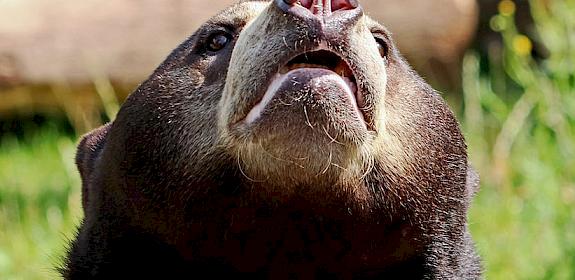Major ivory seizures in Thailand, China and Viet Nam
20th April 2011—Three significant ivory seizures this April provide further insight into the markets being targeted by organized crime syndicates smuggling elephant ivory from Africa to Asia.

Chinese media yesterday reported one of the largest ivory seizures in recent years—a staggering 707 tusks, 32 ivory bracelets and a rhino horn—found during a routine inspection of a large truck at a toll station on a highway in Guangxi, China, just a few kilometers from the border with Viet Nam.
The seizure comes hot on the heels of 247 tusks seized by Customs in Thailand concealed in a consignment of frozen fish from Kenya on 1st April, while yesterday, media in Viet Nam reported police had confiscated another 122 ivory tusks from a warehouse in Mong Cai, a port in north-east Viet Nam, right on the border with China.
“The enforcement authorities in all these cases are to be congratulated for making these interdictions, but these tusks attest to the poaching of more than 500 elephants, which is a major conservation concern,” said Tom Milliken, TRAFFIC’s expert on the illicit ivory trade.
“While we still await official confirmation, this pattern of seizures helps corroborate our suspicions that Thailand and China remain the primary end-use destinations for large quantities of ivory being smuggled out of Africa, with Viet Nam now serving as the leading conduit for trade into China,” Milliken added.
Milliken leads work on elephant and rhino trade and manages the Elephant Trade Information System (ETIS) to track illegal trade in ivory on behalf of Parties to the Convention on International Trade in Endangered Species of Wild Fauna and Flora (CITES).
ETIS is the world’s largest database of elephant product seizure records. The most recent analysis listed Thailand, together with Nigeria and the Democratic Republic of Congo as the three countries most heavily implicated in the global illicit ivory trade, while Viet Nam was identified as one of the major transit countries for illicit consignments of ivory believed to be destined for China.
TRAFFIC sounded an alarm call when the last ETIS analysis showed a seriously escalating illegal ivory trade from 2004 to 2009. Since 2009, however, there has been almost no respite as China, Thailand and Viet Nam alone have seized nearly 20 tonnes of elephant ivory, not counting these latest hauls.
“Sophisticated criminal networks are utilizing every means available—road, sea and air—to smuggle their contraband from African source countries to lucrative markets in Asia, often via circuitous routes to avoid detection,” said Milliken.
“While major seizures, arrests and prosecutions are certainly deterrents to these smuggling operations, the only long-term solution to curtail elephant poaching has to be to reduce the demand for illegally sourced ivory to negligible levels.”




